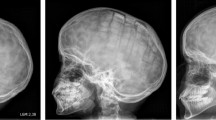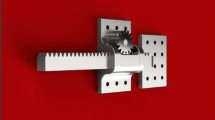Summary
¶ Objective. The authors describe early experience in the use of bioabsorbable fixation devices for cranial reconstruction of paediatric craniosynostosis patients.
Methods. Three patients, individually respectively presenting sagittal synostosis, metopic synostosis, and clover leaf skull deformity, underwent cranial reconstruction using poly L-lactic acid (PLLA) plates and screws. The patients ranged in age from 2 to 10 months at the time of surgery. The postoperative clinical follow-up ranged from 16 to 18 months. All patients showed satisfactory wound healing without signs of infection or local inflammation. The plates provided satisfactory fixation and were not palpable through the skin after 16 to 18 postoperative months.
Conclusion. Our experience demonstrated the efficacy of PLLA bioabsorbable plates and screws for cranial reconstruction in cases of infant craniosynostosis. Prospective studies and longer follow-up of a larger number of patients is desirable for confirmation of these findings.
Similar content being viewed by others
Author information
Authors and Affiliations
Rights and permissions
About this article
Cite this article
Arai, H., Sato, K., Okuda, O. et al. Early Experience With Poly L-Lactic Acid Bioabsorbable Fixation System for Paediatric Craniosynostosis Surgery. Report of 3 Cases. Acta Neurochir (Wien) 142, 187–192 (2000). https://doi.org/10.1007/s007010050022
Issue Date:
DOI: https://doi.org/10.1007/s007010050022




